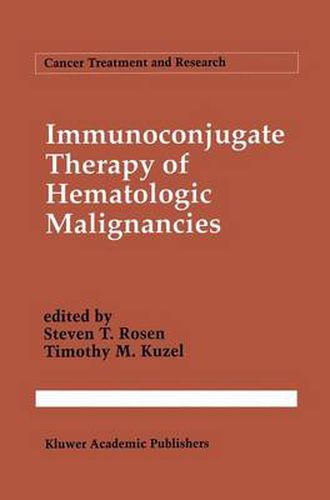Readings Newsletter
Become a Readings Member to make your shopping experience even easier.
Sign in or sign up for free!
You’re not far away from qualifying for FREE standard shipping within Australia
You’ve qualified for FREE standard shipping within Australia
The cart is loading…






This title is printed to order. This book may have been self-published. If so, we cannot guarantee the quality of the content. In the main most books will have gone through the editing process however some may not. We therefore suggest that you be aware of this before ordering this book. If in doubt check either the author or publisher’s details as we are unable to accept any returns unless they are faulty. Please contact us if you have any questions.
The hybridoma technique for producing monoclonal antibodies, developed by Drs. Kohler and Millstein in 1975, revolutionized the field of tumor immunology. It is now clear that there are antigens associated with or restricted to human neoplasms that have biologic significance. Monoclonal antibodies have already been demonstrated to have great immunodiagnostic value and it is anticipated that they will become a component of our therapeutic armamentarium. Most investigators in the field, however, feel that the true potential of monoclonal antibodies in cancer therapy remains to be determined. The most encouraging results have been witnessed in the treatment of hematologic malignancies. This volume in the Cancer Treatment and Research series explores the state of the art of immunoconjugate therapy of haematologic malignancies. The book provides an update of a rapidly advancing field. The preliminary experience of a number of investigators suggests a role for targeted therapy in the treatment of hematologic malignancies. At the present time, immunoconjugates have, in most instances, been reserved for patients with advanced refractory disease. However, it is anticipated in the future that these reagents will be utilized as a complement to traditional therapy or as post-remission consolidation in patients with minimal residual disease. The obstacles have been defined; solutions will require further research and creative imagination.
$9.00 standard shipping within Australia
FREE standard shipping within Australia for orders over $100.00
Express & International shipping calculated at checkout
This title is printed to order. This book may have been self-published. If so, we cannot guarantee the quality of the content. In the main most books will have gone through the editing process however some may not. We therefore suggest that you be aware of this before ordering this book. If in doubt check either the author or publisher’s details as we are unable to accept any returns unless they are faulty. Please contact us if you have any questions.
The hybridoma technique for producing monoclonal antibodies, developed by Drs. Kohler and Millstein in 1975, revolutionized the field of tumor immunology. It is now clear that there are antigens associated with or restricted to human neoplasms that have biologic significance. Monoclonal antibodies have already been demonstrated to have great immunodiagnostic value and it is anticipated that they will become a component of our therapeutic armamentarium. Most investigators in the field, however, feel that the true potential of monoclonal antibodies in cancer therapy remains to be determined. The most encouraging results have been witnessed in the treatment of hematologic malignancies. This volume in the Cancer Treatment and Research series explores the state of the art of immunoconjugate therapy of haematologic malignancies. The book provides an update of a rapidly advancing field. The preliminary experience of a number of investigators suggests a role for targeted therapy in the treatment of hematologic malignancies. At the present time, immunoconjugates have, in most instances, been reserved for patients with advanced refractory disease. However, it is anticipated in the future that these reagents will be utilized as a complement to traditional therapy or as post-remission consolidation in patients with minimal residual disease. The obstacles have been defined; solutions will require further research and creative imagination.